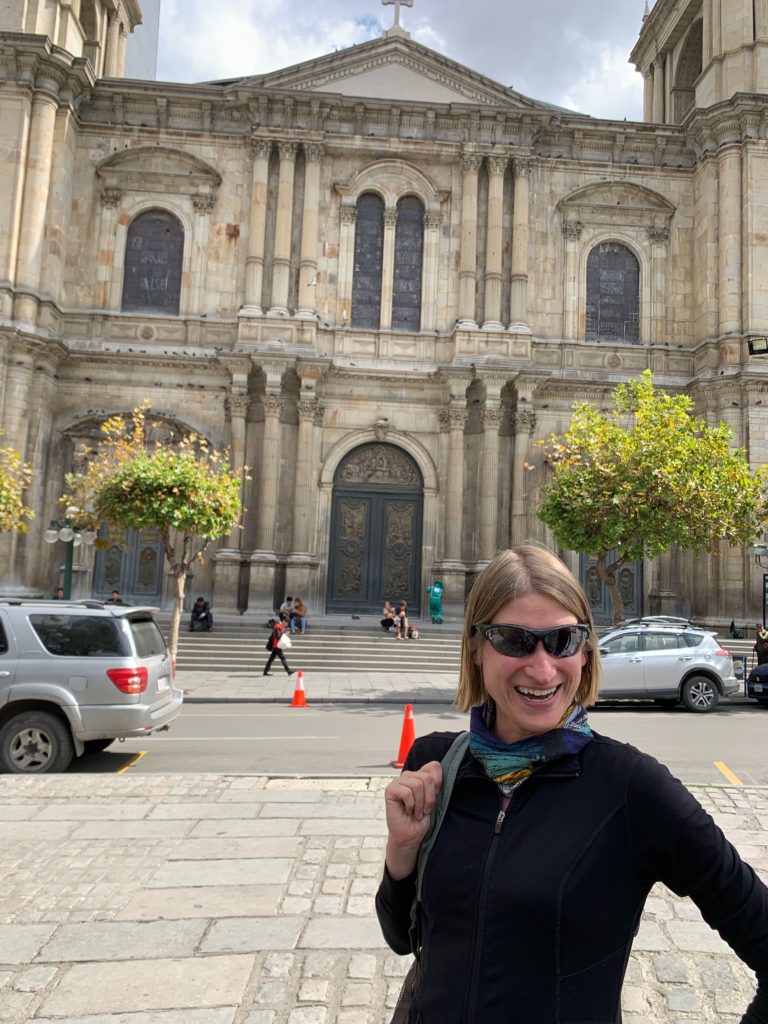During our quick visit to Bolivia, we only scratched the surface of La Paz. Fortunately, another Nido friend was also in town. Misti had lived in La Paz for two years, and she was back visiting friends, so she served as tour guide for our one full day in the city.
Ian booked our hotels, which is why we ended up staying at a place with the slogan “easy, fun, social.” You have to check out the website to fully appreciate my apprehension: Loki Hostel. Fortunately, it did not live up to the hype. It was housed in a gorgeous old building with high ceilings, parquet floors, French doors, and other lovely architectural features. With a little redecorating, it could have been a swanky upscale boutique hotel. After our long drive from Lake Titicaca, we checked in and ate a late lunch in the hotel restaurant (which also surpassed my expectations).
With no real plans, we wandered toward Murillo Square and found ourselves in front of the Catedral Basílica de Nuestra Señora de La Paz (known as the La Paz Cathedral in English). The crowd mesmerized us with its diversity: global tourists, businessmen in suits on their cellphones, trendy Bolivians in jeans and sweaters, cholitas (indigenous women dressed in traditional layered skirts and bowler hats), university students studying in the sunshine, and hawkers selling everything from prayer candles to tours.
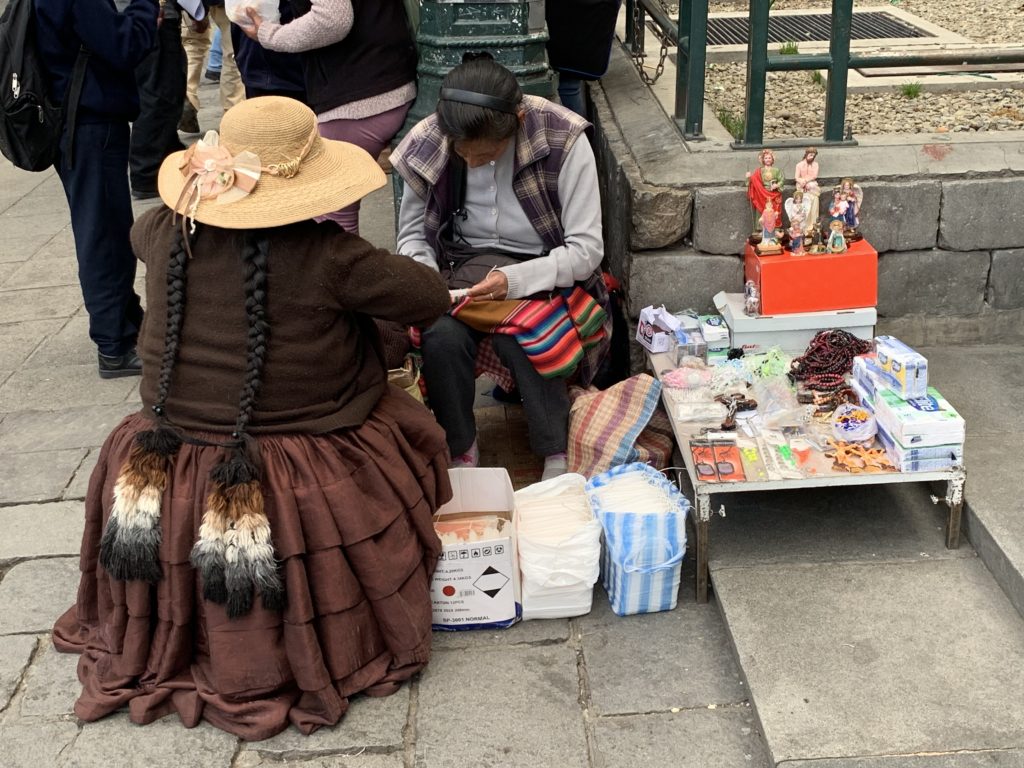
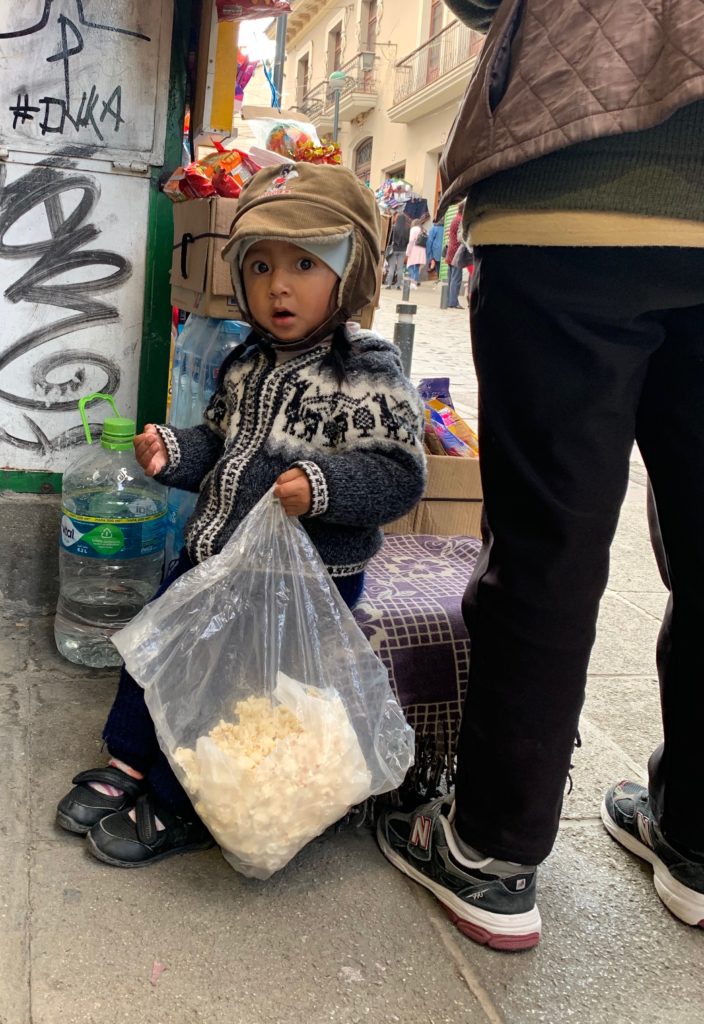
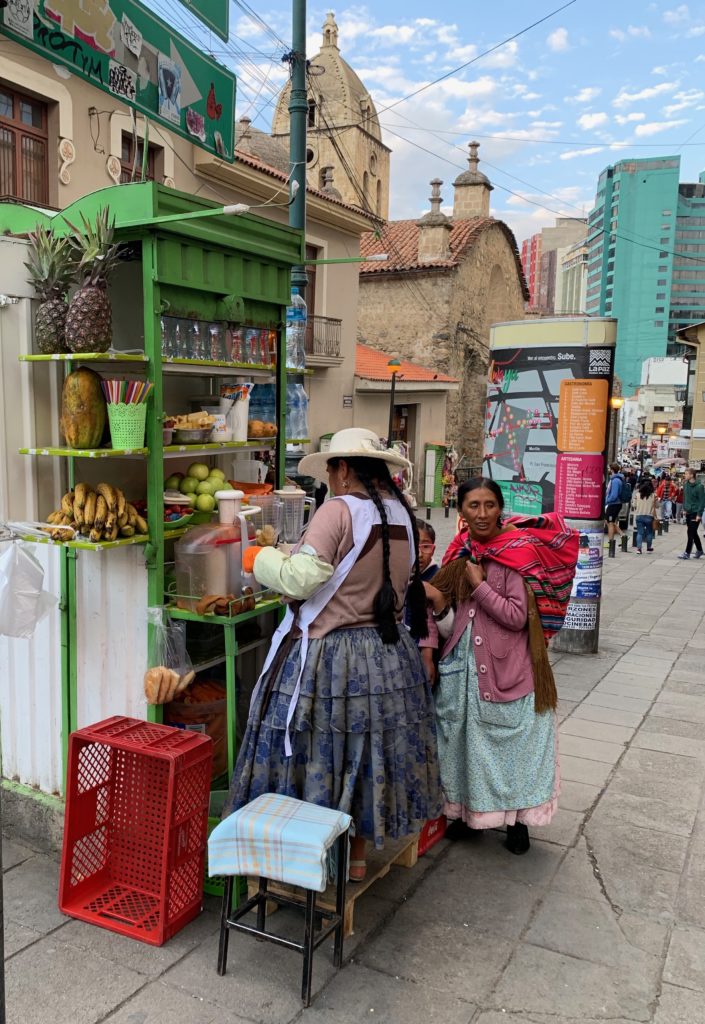
Strolling around the neighborhood, we stumbled upon the textile market. Everything was stunning. It took all my restraint not to buy every bag, poncho, sweater, table runner, pillowcase, and aguayo (the traditional blanket for carrying babies and other items on your back). Eventually, we popped in to an Irish pub for happy hour and then headed to a Mexican restaurant for dinner. Veggie tacos and margaritas – yum!
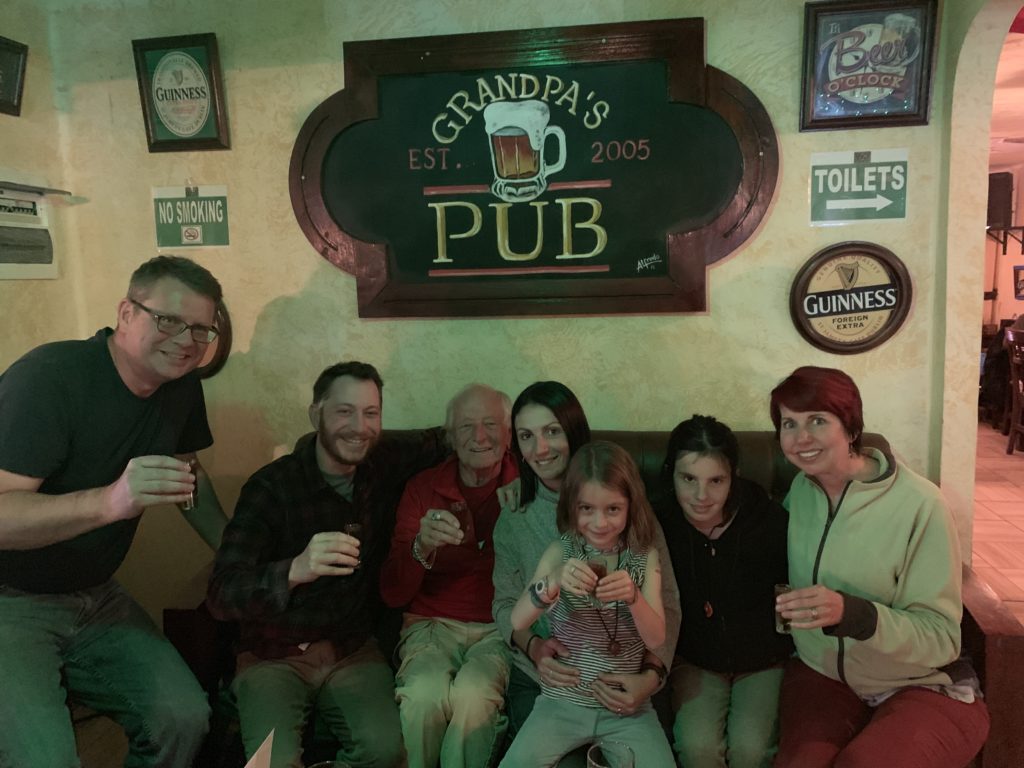
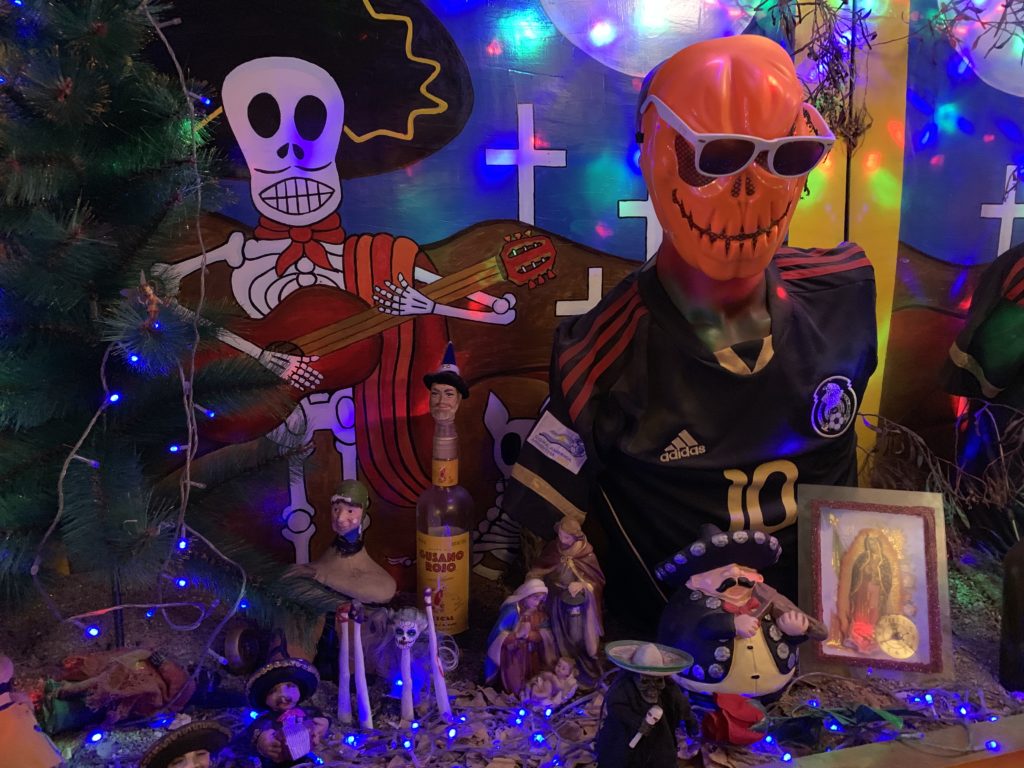
In the morning, we met Misti and poked around the Witches Market. We had already seen those shops during yesterday’s exploration, but we didn’t realize what they were. Misti said it’s become much more touristy since she lived here 5 years ago. They had lots of herbs and coco leaves, objects to place on your shrine, very voodoo-y bibs and bobs, but the most interesting were the llama fetuses, which are supposed to bring good luck. Apparently, they are placed in the foundation of a new construction as a blessing.
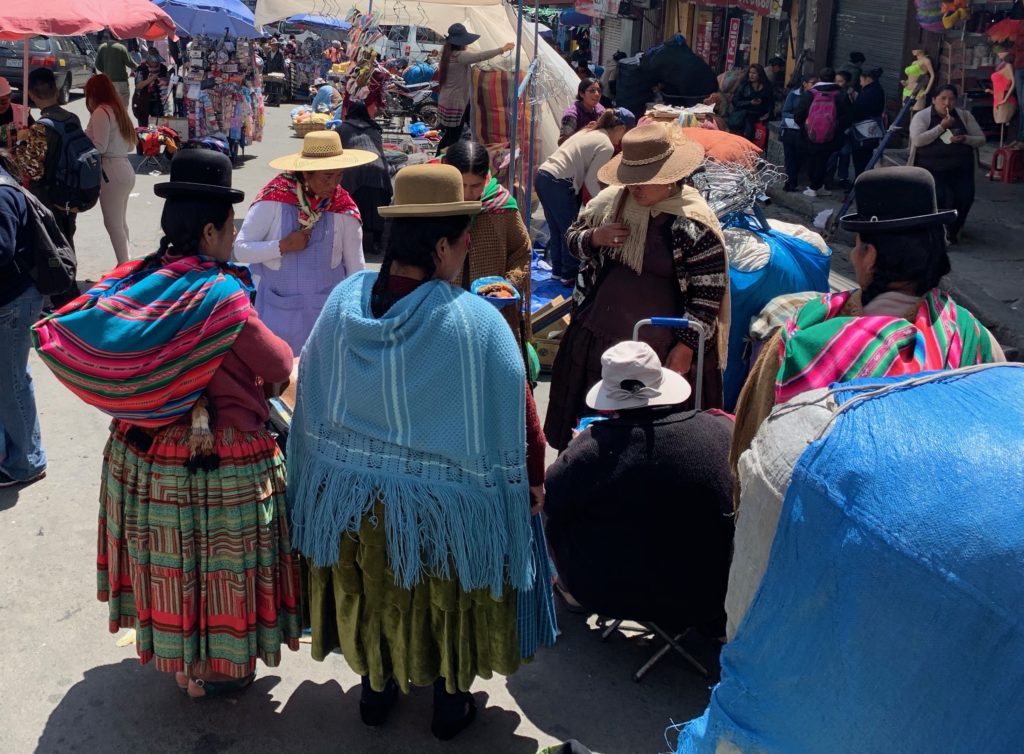
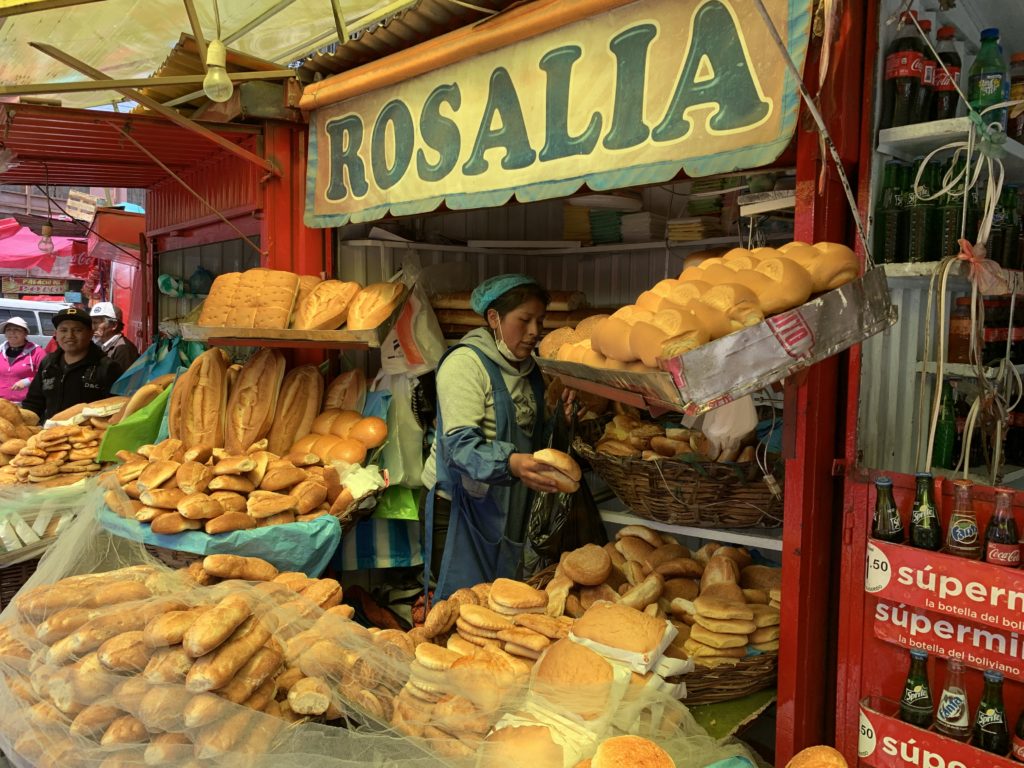
From there, we walked to the teleferico. La Paz has the world’s largest high-altitude urban cable car system, according to an article on The Telegraph website. We took the Red Line up to El Alto, the city at the top of the basin, and then we transferred to the Silver Line, which gave us an interesting perspective on the perimeter of the city.
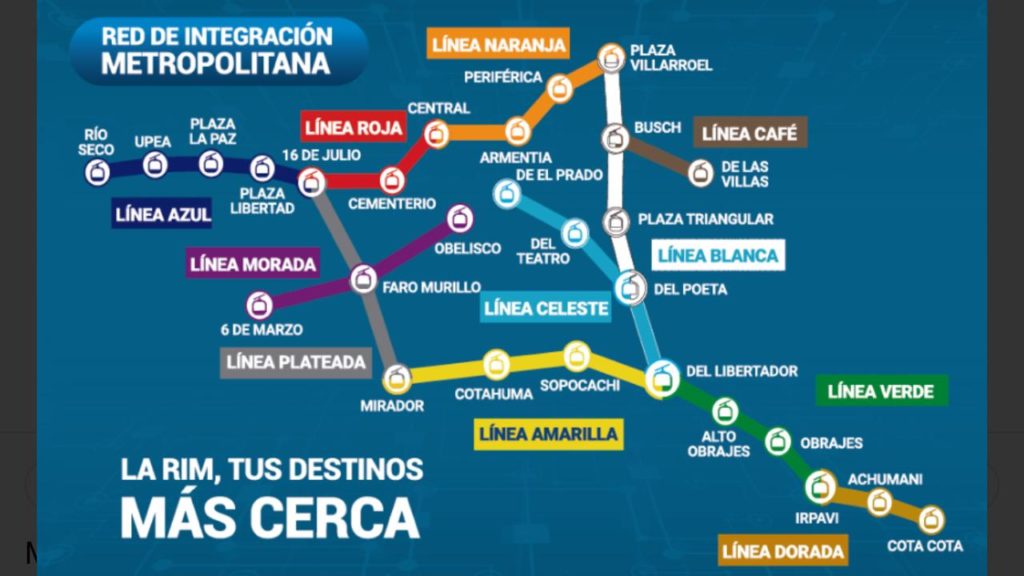
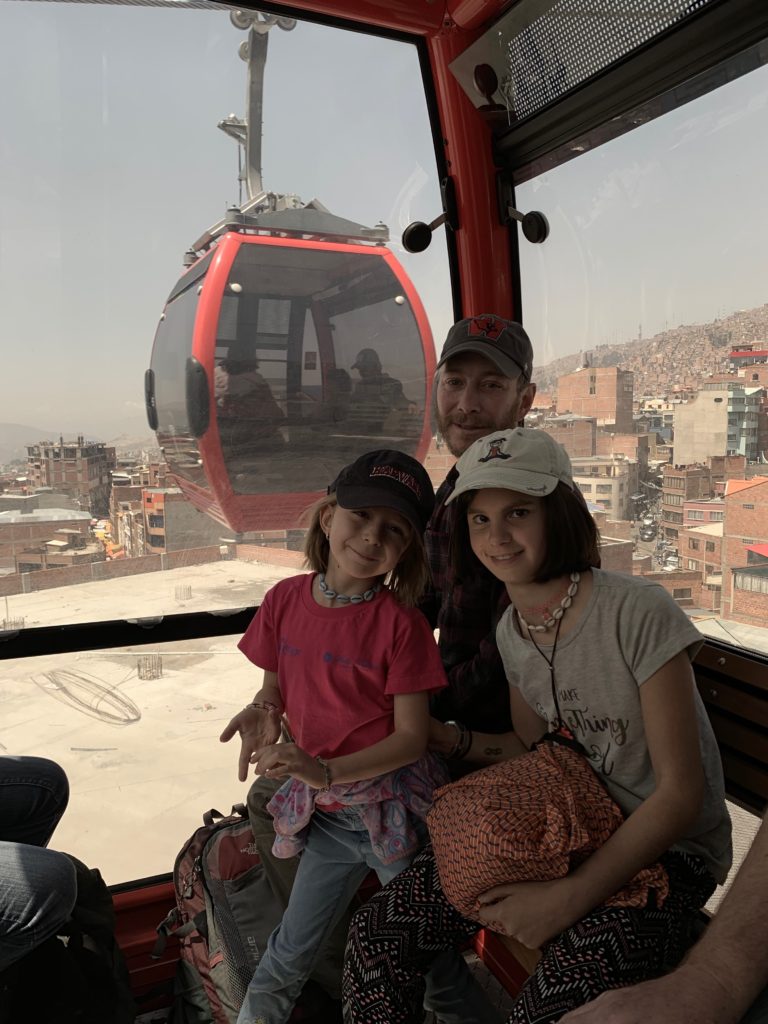
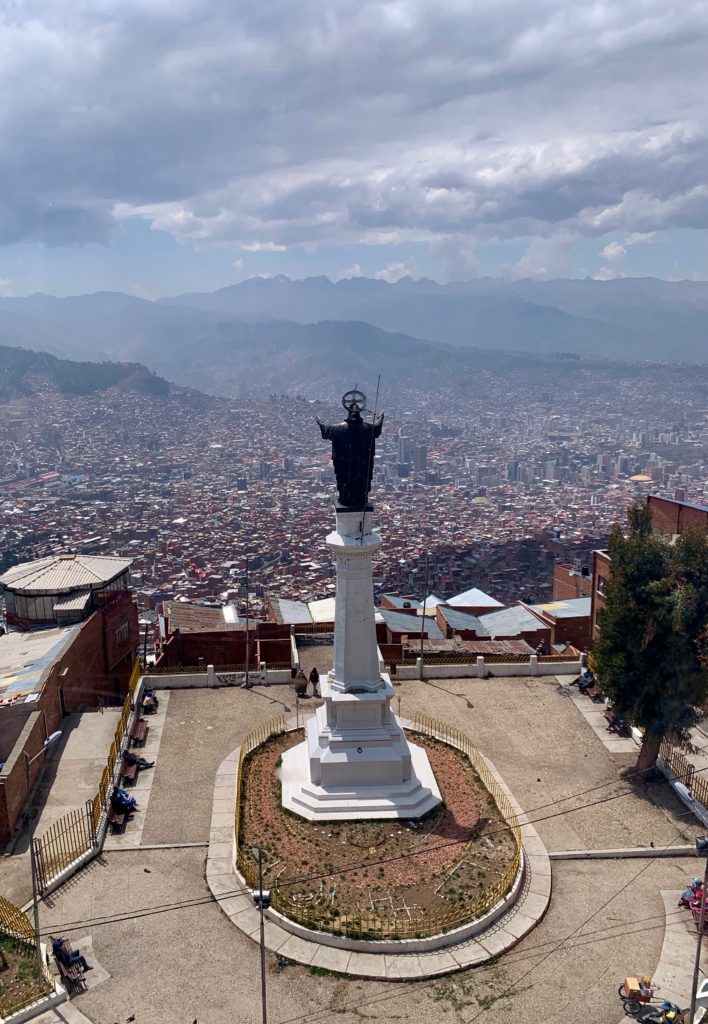
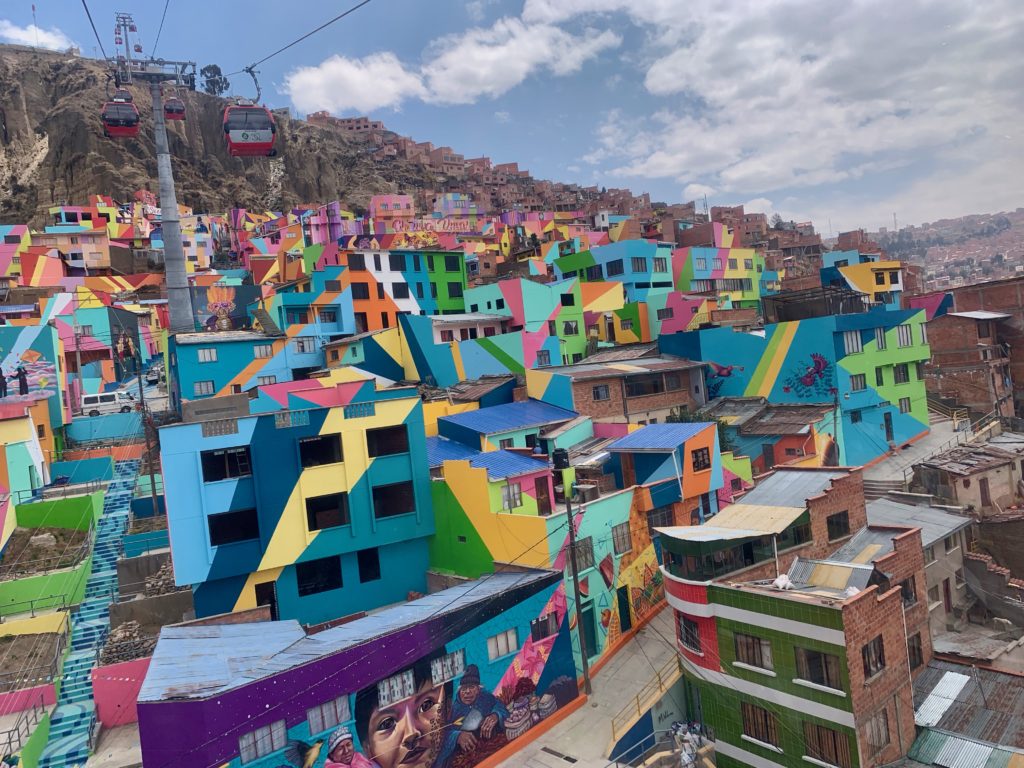
We returned to the city on the red line but not before getting a good look at a car stuck in a chasm on the hillside. (I have spent hours online trying to figure out how it got there, and the only semi-reliable information I found is from Reuters. Apparently a taxi driver lost control of his vehicle and drove off the cliff in 2011. Three people died, and three were rescued.)
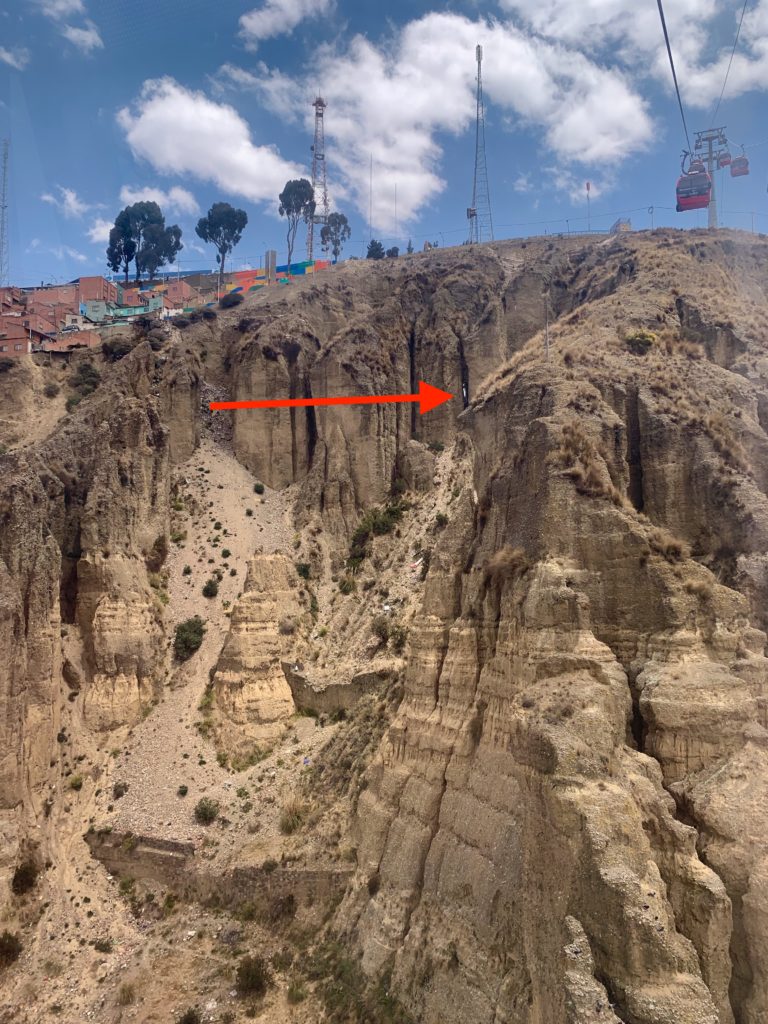
We parted ways with Stella’s family, and Misti continued our tour for the rest of the afternoon, hiking up and down the steep streets of La Paz and pausing occasionally to share stories about the city’s wacky history. One of the most bizarre stories put the San Pedro Prison at center stage. Located smack dab in the middle of a nice part of town, the prison looks innocuous from the outside, not even like a prison. Inside, it’s a city within a city, where inmates run the show. This story about the prison on the Architectural Review website is fascinating.
Misti took us to one of her favorite restaurants, Namas Té, an artsy little vegan place. Such a cool vibe, and the food was fabulous.
Another highlight of our walking tour was MUSEF, the Museo Nacional de Etnografía y Folklore. Housed in the colonial Marquis de Villa Verde Palace, which was built in 1730, the small museum offers fantastic collections: pottery, textiles, masks, feather art, and traditional clothing. I didn’t take many photos inside, but I loved it all!
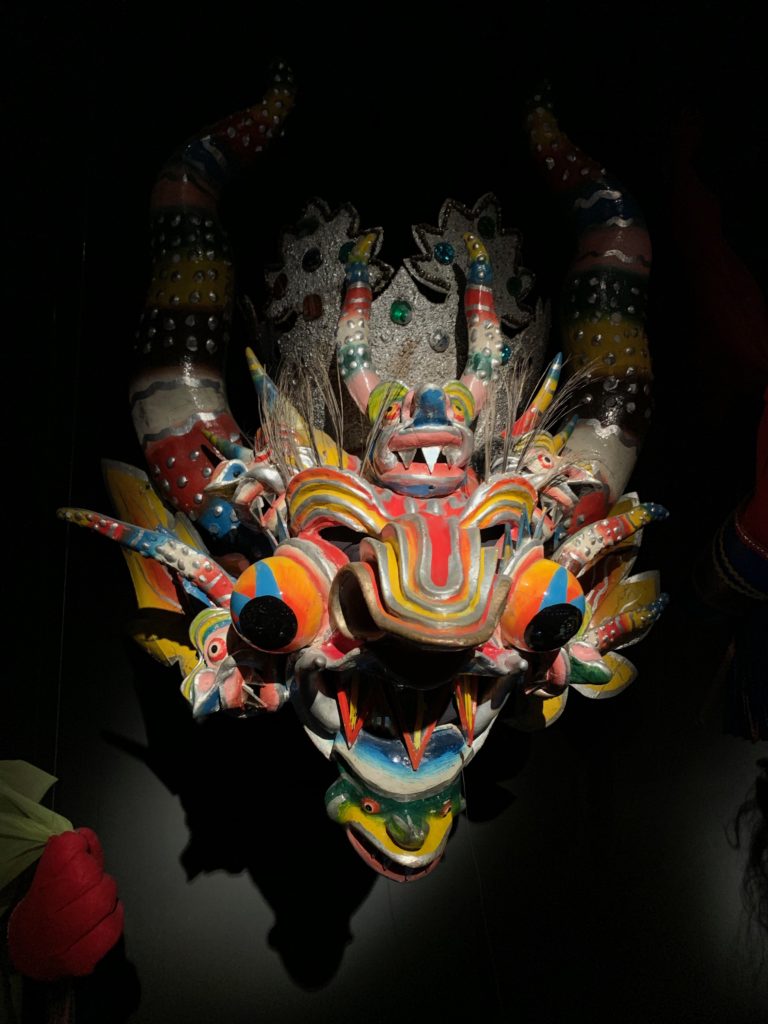
We hung out at the museum’s coffee shop for awhile, chatting about the museum and Bolivian culture, before bidding farewell to Misti and heading back to our hotel. For dinner, we met up with our group and walked to The Local Dish. Another great choice!
